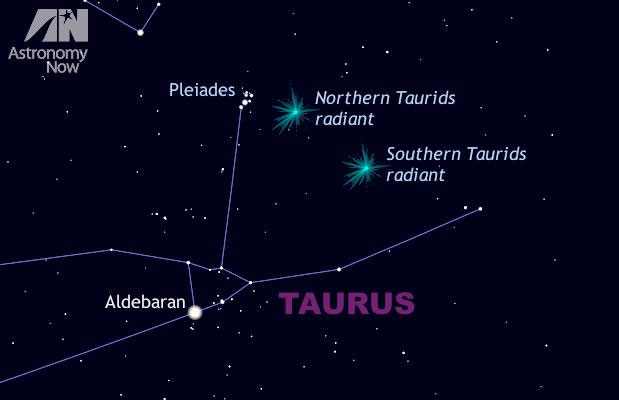During the recent Halloween night, the absence of the moon allowed many to witness the display of Venus, Jupiter, Saturn, and occasionally a Halloween fireball, which was actually the Taurid meteor shower.
The Taurid Meteor Shower is typically much smaller than other meteor showers, with the “peak” night only producing a few meteors per hour. However, it is the longest-lasting meteor shower, extending over two months, while major meteor showers usually last only a few days to a few weeks.

Location of the Southern Taurids and Northern Taurids meteor showers – (Photo: Astronomy Now).
In fact, there are two Taurid meteor showers. The first is the Southern Taurids, which occurs from September 10 to November 20. According to EarthSky, the “peak” of the Southern Taurids this year is predicted by most astronomers to be around November 5-6. However, the International Meteor Organization suggests it peaked on October 10, while the American Meteor Society (AMS) asserts it will peak on November 2-3.
Determining the peak night of the Taurid meteor shower is quite challenging due to its sparse nature and the small variation in meteor counts between nights compared to other meteor showers.
Meanwhile, the Northern Taurids will fall from October 20 to December 10, with the expected peak occurring on the night of November 11-12.
According to Inverse, the origin of the Taurid meteor shower is attributed to the comet 2P/Encke, which occurs when Earth passes through the trail of dust and debris it leaves behind. However, this trail of dust has been disturbed and split by the massive gravitational influence of Jupiter, resulting in the Southern and Northern Taurids appearing close together, differing slightly in time and distance.
Since both meteor showers are visible in the sky at the end of October, the Taurid meteor shower is also referred to as the “Halloween fireball.” To spot them, look towards the constellation Taurus.


















































